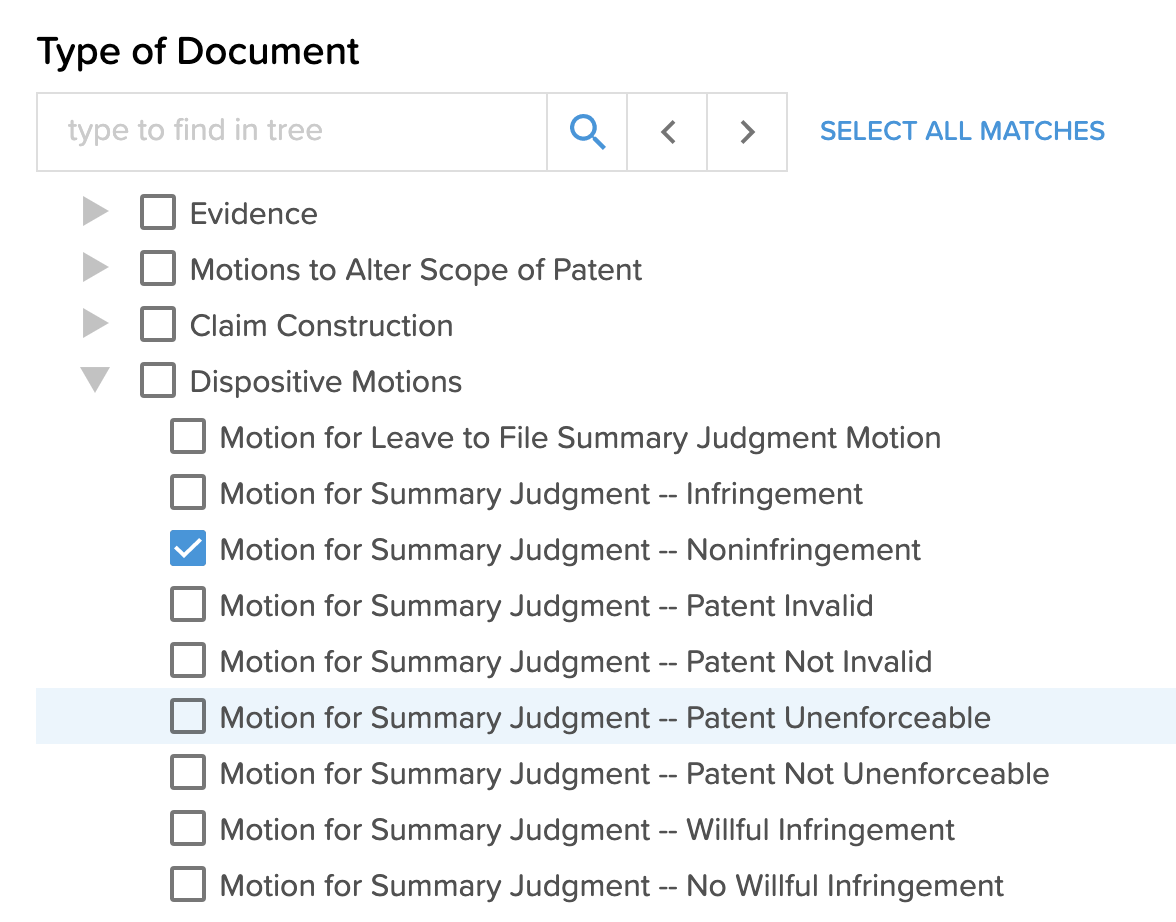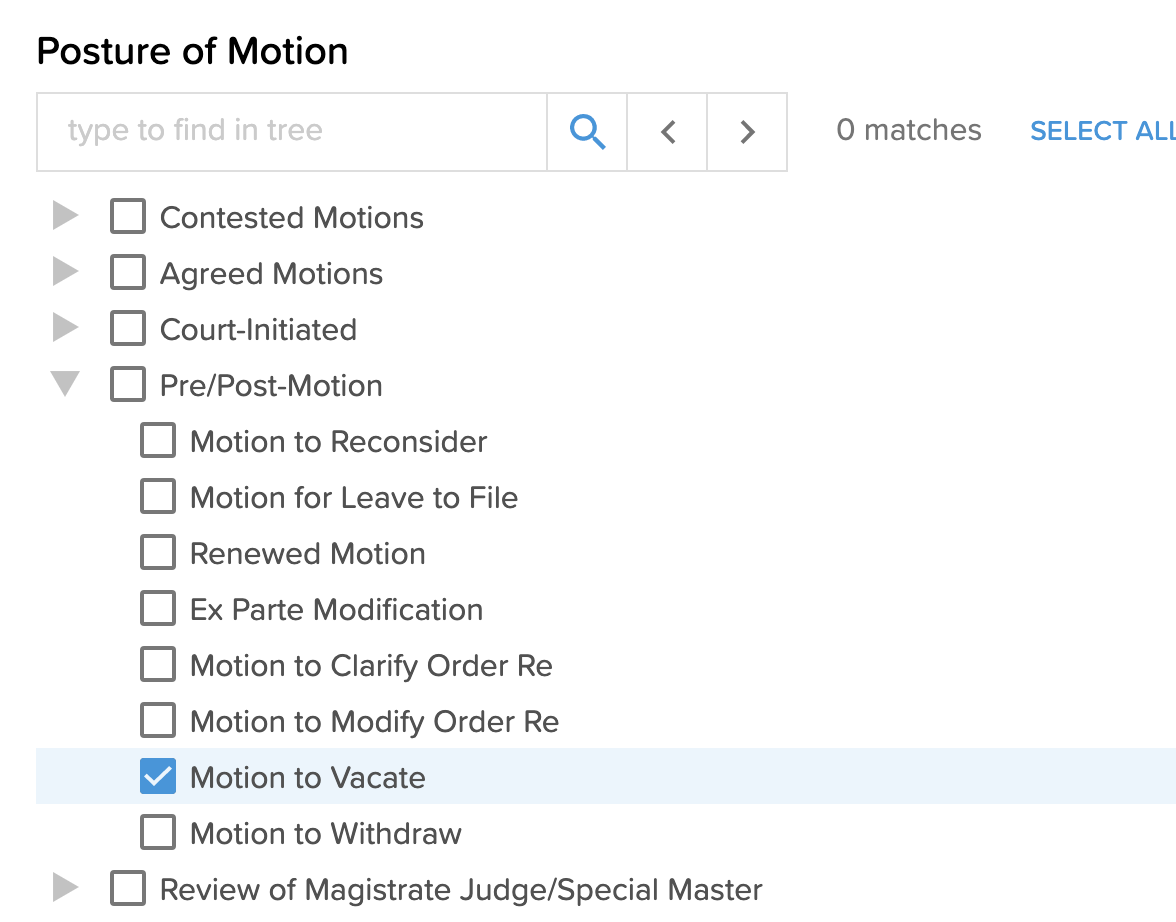LEGAL
RESEARCH
Faster and smarter than ever before
To date, we have reviewed and flagged 6.7 million docket entries and we’ve processed nearly 600,000 court orders. Those are huge numbers considering how much detailed data (up to 29 different fields) we record for each one. If we multiply the number of processed decisions by the number of data fields we could enter for each one, it adds up to around 17 million possible data items.
Our system allows users to slice and dice those 17 million possibilities to find exactly what they are looking for.
Detailed Taxonomies
Type of Document
Many filters are supported by detailed legal taxonomies used to classify and normalize data across jurisdictions. They are extremely granular and make complicated research easier than ever before. For example, the Type of Document taxonomy contains more than 700 different motion types organized by topic.
Precision Searches
Combine the power of multiple search filters with the precision of detailed taxonomies to quickly find specific types of decisions. To see some examples on how filters fit together to answer complex questions, click on one of these example research goals:
More Focused Motions
Building a patent litigation strategy can sometimes feel like putting together a jigsaw puzzle without all the pieces. You know the law and the facts of your case, but you don’t always know which arguments a judge will find most compelling. Docket Navigator’s Motion Success chart is a virtual map of your judge’s decision history, allowing you to identify successful arguments so you can focus on what’s likely to win, while avoiding pitfalls.






